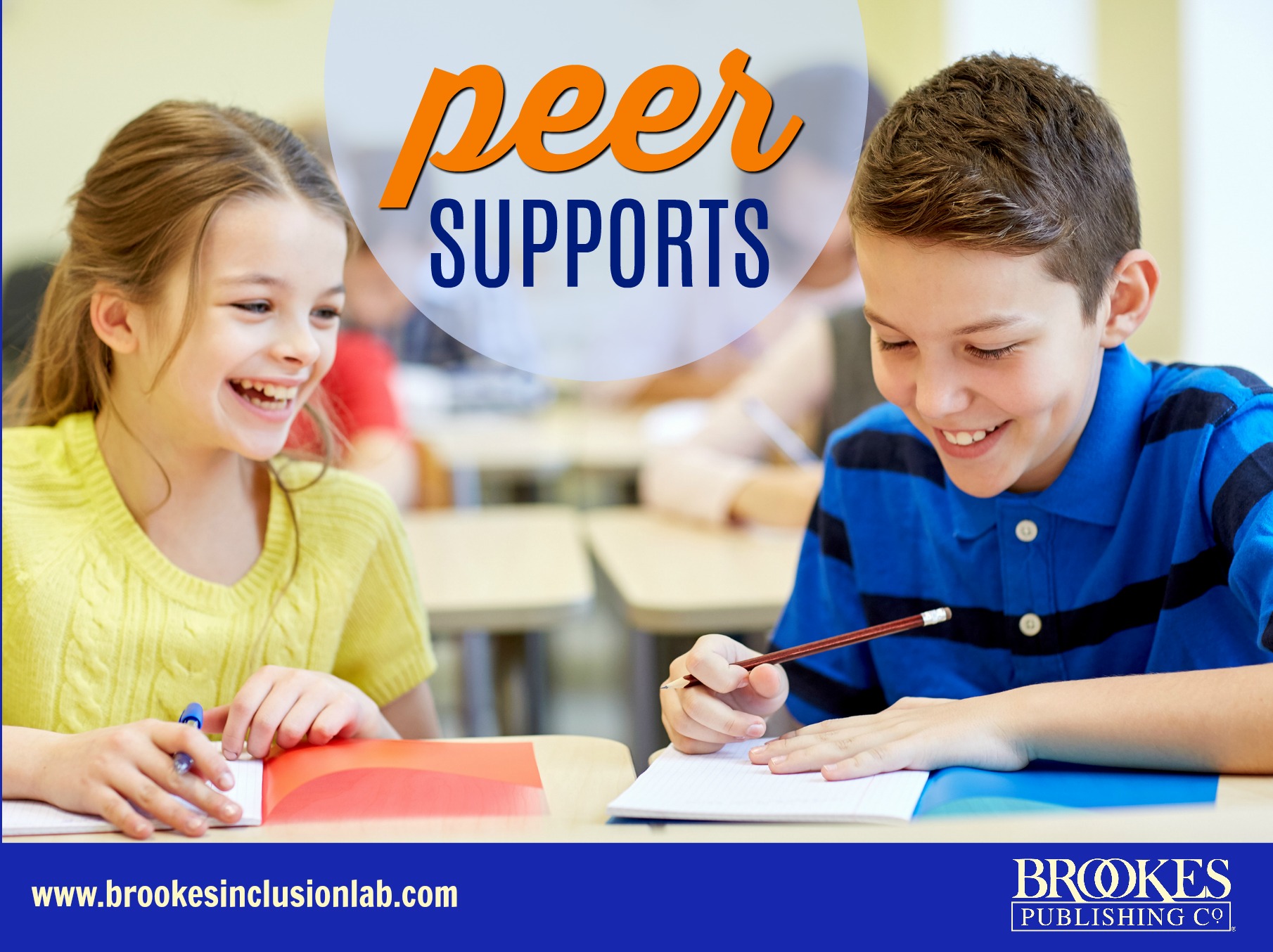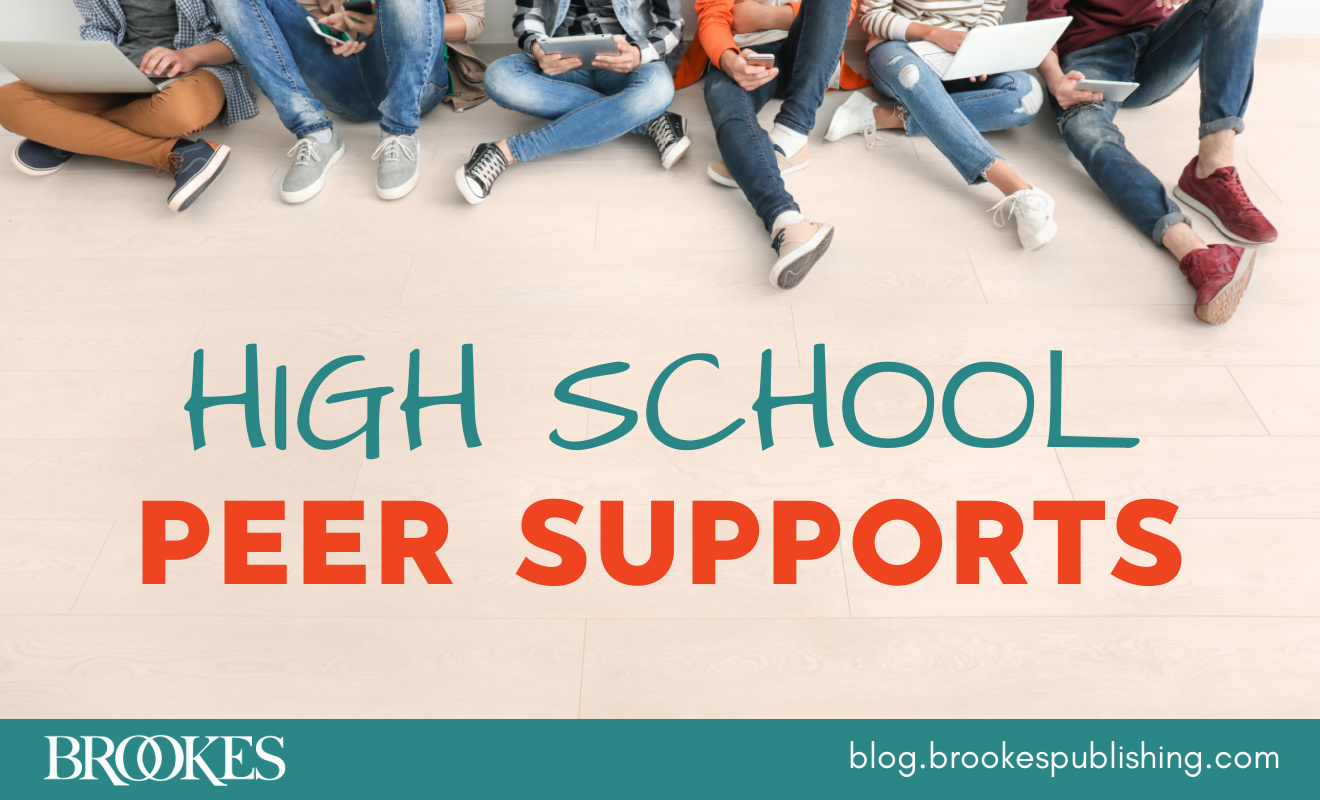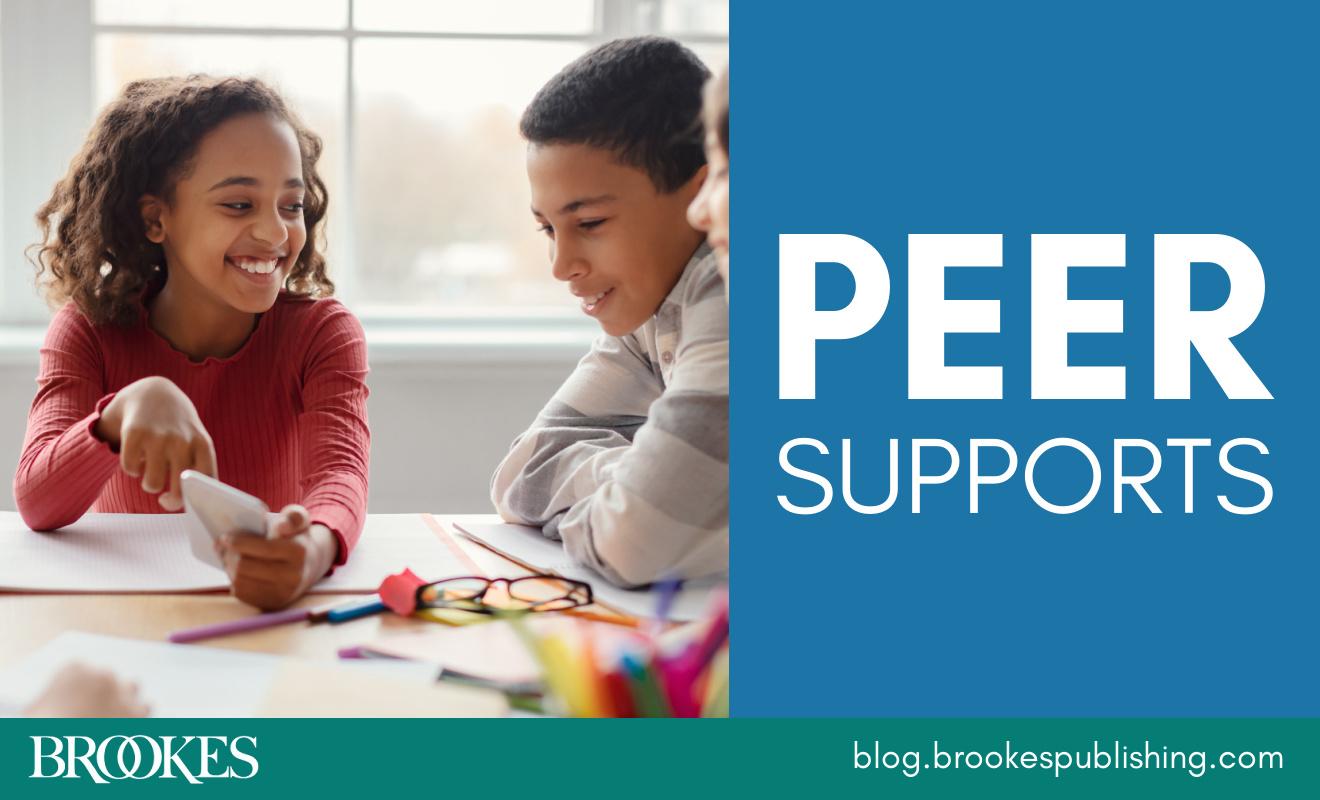Peer support arrangements are an effective way to support inclusive education, make the most of teacher and paraprofessional time, and increase the achievement level of all students. Today’s post, excerpted and adapted from Peer Support Strategies for Improving All Students’ Social Lives and Learning by Erik Carter, Lisa S. Cushing, & Craig H. Kennedy, offers a brief case story that highlights the benefits of peer support arrangements in a high school. Read the story of Qiang, a student with significant disabilities, to see how peer supports can help improve access to the general curriculum and strengthen social interactions for all students.
Biology was easily one of most popular courses at Edgehill High School. Ms. Stiller was a creative teacher who believed strongly in engaging students and helping them see the relevance of science to their everyday lives. Hands-on labs, cooperative group work, interactive web-based activities, and interesting video clips all would be woven together to promote active learning among students. Students could often be overheard talking about the interesting things they are learning in this class. It was no surprise, then, that Mr. Malter thought biology would be a perfect class for Qiang to take.
Although Qiang was now a sophomore at Edgehill High School, so far he had taken few general education academic classes at his school. His previous special ed teacher had difficulty recognizing how someone with significant disabilities could benefit from enrolling in these classes, so apart from gym and art, most of Qiang’s day was spent in special education classes. Although he enjoyed computers, watching sports, and music—interests shared by many other students at Edgehill—he had few friends outside of his special education classes. Mr. Malter thought biology would offer Qiang opportunities to both access an interesting, relevant curriculum and to meet other students at his school.
Mr. Malter and Ms. Stiller met to discuss the supports Qiang would need to participate meaningfully in the class. Although working in small groups was a common practice in the biology class, both teachers believed it would be important to identify a couple of peers who would be more intentionally involved in supporting Qiang. Simone and Fong—two students who shared Qiang’s passion for sports and interest in computers—agreed to serve in peer support roles. Because Qiang used assistive technology, Mr. Malter met with both students over lunch to talk about how to support Qiang in using his computer more fluently and consistently. He also shared some initial ideas for how they might help Qiang get to know his other classmates, make choices, and use his communication device—all goals included on Qiang’s IEP.
How It’s Going: Supports for Qiang Throughout the Day
At the beginning of each class period, Simone sometimes helps Qiang pass out lab instructions or pick up homework assignments, which provides Qiang with opportunities to meet the rest of the class. Simone programs two or three clever comments into Qiang’s communication device that are relevant to the materials that Qiang is gathering or relate to some current event. When the bell rings, Fong usually helps Qiang get out all his materials and boot up his laptop. Whenever there is downtime, both peers will ask Qiang about his day or talk about upcoming school events.
When Ms. Stiller lectures, which she does sparingly, Simone and Fong periodically lean over to summarize key points or make connections to Qiang’s interests and experiences to help him follow along. They also encourage Qiang to answer questions they are sure he knows the answer to. Because Ms. Stiller provides guided notes for all students, Simone, Fong, and Qiang all check their answers against one another’s to make sure they’re all on the same page.
During small-group and lab activities, Qiang’s peers and other group members look for ways he can contribute to the activity, even if only partially. For example, the group asks Qiang to help make decisions about which materials they should use, how they will complete the assignment, and which group members will assume which roles. When each group reports their findings back to the class, they ask Qiang if he wants to share the group’s answers using his communication device. During especially difficult labs, Ms. Stiller programs hints into Qiang’s communication device, and all of Qiang’s classmates know they have to go to Qiang if they need help, typically making him the most important person in the classroom.
Independent seatwork is the most challenging instructional format for Qiang. Sometimes, Simone or Fong will complete their work right along with Qiang; other times, they will help him after they finish their own work. Mr. Malter adapts these class activities and will occasionally work directly with Qiang to help him complete his assignments. When Ms. Stiller is showing video clips or a website as part of the unit, however, Qiang occasionally uses this time to download all the videos or to locate all the websites Ms. Stiller has on her list. When their work is completed, Simone or Fong might help Qiang collect assignments or materials for Ms. Stiller. Or the students sometimes talk quietly together about a new movie they have seen or last night’s football game.
At the bell, Qiang’s peers help him shut down his computer and gather his materials. They also help him write down his homework assignment in his planner. Although Fong used to walk with Qiang halfway to his next class, Qiang has since gotten to know two other students who are enrolled in the same class, both of whom now walk with him.
***
Qiang’s story spotlights some of the many ways peer supports can help high school students with disabilities access inclusive learning and social opportunities—and help typically developing students learn new skills at the same time. For a comprehensive guide to implementing peer support strategies in middle and high schools, pick up the practical book behind today’s blog post.
Peer Support Strategies for Improving All Students’ Social Lives and Learning
By Erik Carter, Ph.D., Lisa S. Cushing, Ph.D., & Craig H. Kennedy, Ph.D.
A complete, start-to-finish guide to peer supports, this book is packed with photocopiable planning, implementation, and evaluation tools; evidence-based strategies; and vignettes that illustrate successful peer supports. Get this must-have book and create schools where all students—with and without disabilities—help each other reach their academic goals, make new friends, and live full and meaningful lives.
GET THE BOOKStay up to date on the latest posts, news, strategies, and more!
Sign up for one of our FREE newslettersMore posts like this

5 Peer Support Approaches That Work!
March 27, 2018
UDL, Accommodations, and Peer Supports: How One Teacher Did It
July 5, 2016



Write a Comment
Your email address will not be published. Required fields are marked *
Post a Comment